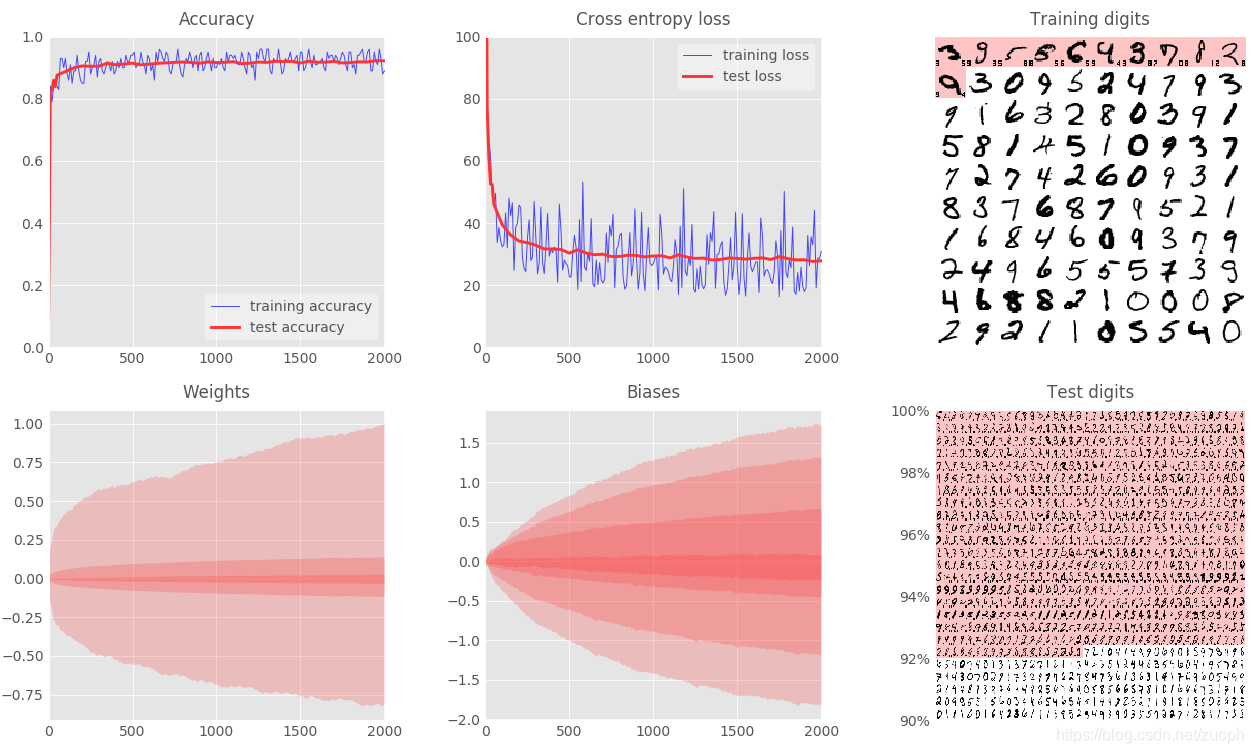Tensorflow and deep learning without a PhD系列第一部分
原始链接:
https://codelabs.developers.google.com/codelabs/cloud-tensorflow-mnist/#1
试验目的:
What is a neural network and how to train it - 对神经网络有初步理解,了解如何训练一个神经网络
How to build a basic 1-layer neural network using TensorFlow – 使用tensorflow框架建造一个简单的一层神经网络
How to add more layers – 学习添加更多的层
Training tips and tricks: overfitting, dropout, learning rate decay… – 训练中的技巧:过度拟合、丢弃、学习率衰减等
How to troubleshoot deep neural networks – 如何解决深度神经网络中的问题
How to build convolutional networks – 如何建造卷积神经网络
前提条件:
Python 2 or 3 (Python 3 recommended)
TensorFlow
Matplotlib (Python visualisation library)
需要的命令参考下面链接:
https://github.com/GoogleCloudPlatform/tensorflow-without-a-phd/blob/master/tensorflow-mnist-tutorial/INSTALL.txt
先把源文件通过git下载到本地,进入例子所在目录后执行:
python mnist_1.0_softmax.py
得到下面的图形化输出:

- 训练神经网络
基本步骤
Training digits(训练数字集) => updates to weights and biases(更新权重和偏置) => better recognition (loop)(更好的识别率)

每次输入100个数字进行训练,训练过程中你可以通过观察字符的背景颜色来区分是否数字被正确识别,白色背景的是正确识别的,红色背景的是识别有误的,同时数字左下方带正确的小数字,右下方带计输出来的错误小数字。
There are 50,000 training digits in this dataset. We feed 100 of them into the training loop at each iteration so the system will have seen all the training digits once after 500 iterations. We call this an “epoch”.
数据集中有50000个待训练数字,每个训练循环输入100个数字,我们需要重复500次才能把所有的数字输入系统中。这个过程称为一个纪元。
未完待续… …